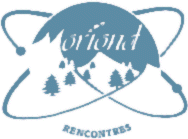Dr
guofa xu
(IHEP)
05/03/2008 09:15
Based on 58M J/psi samples, many mesons, baryons, and other new resonances have been analyzed at BESII. Here, I will mainly focus on the status of the research of light hadrons and new enhancement structures.
M.
Ernesto Arganda
(Universidad Autónoma de Madrid)
05/03/2008 09:55
We study different LFV processes, namely, $l_j \to l_i \gamma$, $l_j \to 3 l_i$ decays, $\mu-e$ conversion in nuclei and LFV semileptonic decays, within the context of the Constrained Minimal Supersymmetric Standard Model, enlarged by three right handed neutrinos and their supersymmetric partners, and where the neutrino masses are generated via a seesaw mechanism. Two different scenarios with...
Prof.
German Valencia
(Iowa State University)
05/03/2008 10:55
The HyperCP collaboration observed three events for the decay Sigma^+ -> p mu^+ mu^-. They suggested that new physics may be required to understand the implied decay rate and the observed M_{mumu} distribution. Motivated by this result, we re-examine this mode. First within the standard model, and then assuming there is a new particle.
Within the SM we find that Sigma^+ -> p mu^+ mu^- is...
Prof.
Eric D. Zimmerman
(University of Colorado)
05/03/2008 11:15
KTeV has new results on several rare and forbidden decays of the K_L and pi^0. These include newly published searches for lepton flavor violation as well as measurements of all neutral pion decays with electrons in the final state. Some of these decay modes are being measured for the first time in decades, including the pi^0 -> +e-e+e- decay which provides the only direct measurement of the...

